Recovering forest reveals its history like chapters in a book if you take the time to read the pages of the story. 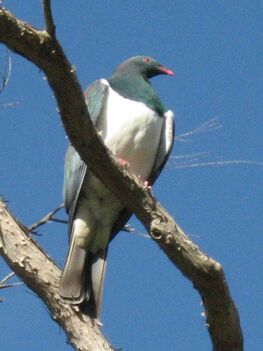 Kereru, the world's largest pigeon, seek out puriri trees to feed on their berries. Kereru, the world's largest pigeon, seek out puriri trees to feed on their berries. Our eastern trapline sidles across the slopes of a steep stream valley as it heads up to the watershed ridge line. Once cleared farmland, these slopes are now reforested with mature canopy kanuka forest. Along the floor of the valley, remnants of the original forest are still present with these trees marked out by their size and height. Station 15 on the trapline is at the confluence of two headwater streams and is a great place for a break from setting traps before the steep climb out of the valley. On the cool, moist stream bank stands a very large puriri tree that not only provides a massive structural canopy it tells the story of this forest. This puriri predates the clearance of the valley and it would have been a large tree when the axes arrived. It clearly became a mature tree inside a forest as its branches are erect and it does not have the spreading canopy of puriri that grow in the open. It has grown up into a light well that was created when an even older tree fell and tore a gaping hole in the original forest canopy. This tree is the first chapter of the forest’s story and it proves that mature broadleaf forest has persisted continuously on this site for at least centuries.
0 Comments
In any discussion of predator control, cats are the elephant in the room, but ignoring them may be the worst option. In October 2019 we posted comment about hedgehogs being “The Forgotten Predator”. Now it is time to consider if feral cats are “The Ignored Predator”. That cats are missing from New Zealand’s Predator Free 2050 aspiration is an anomaly that needs to be addressed. Is it a lack of ecological data, a lack of know-how or a lack of political will that is behind this exception? A lack of ecological data cannot be the reason behind this omission because in 2016 a paper authored by Australian and New Zealand based research ecologists was published in the Proceedings of the National Academy of Sciences that clearly showed the impact that feral cats have on the loss of global biodiversity. Of contemporary vertebrate extinctions, invasive predators were implicated in almost 60%, and feral cats contributed to 60 (42%) out of those 142 extinctions. Therefore, feral cats were directly connected to a quarter of the recent extinctions of vertebrate species. These numbers are also probably underestimates as the authors found a further 23 critically endangered species that were listed as “possibly extinct”. Coronavirus is back as Covid-19 continues to emulate a fast running invasive mammal biosecurity incursion. On August 17 2021 the New Zealand Government announced that an infection of the Delta variant of the SARS‑CoV‑2 virus had been positively identified in the community. As a result, the whole country immediately moved from the least restrictive Level 1 Covid-19 alert level to the most restrictive Level 4 lockdown. 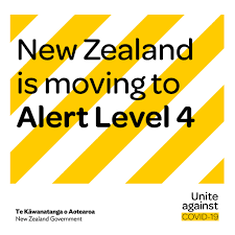 This event occurred almost 18 months after the virus had been first detected in New Zealand in late February 2020. New Zealand’s swift and decisive action to suppress coronavirus through the autumn of 2020 resulted in its successful eradication from the country. Over the ensuing months positive cases of infection were continuously detected at the border and these were mostly successfully controlled by the Managed Isolation and Quarantine system designed to reinforce the country’s closed international border. Recollections of a visit to Whenua Hou / Codfish Island to remove an avian predator during the winter of 1981. Off the west coast of Rakiura / Stewart Island, Codfish Island / Whenua Hou is a small piece of primal New Zealand. In the winter of 1981, I was privileged to spend two weeks there as a NZ Wildlife Service volunteer helping remove a native avian predator. Forty years on, the recollections of the visit are as fresh and memorable as the day I left the island.
Away from the sports field Robert Muldoon was Prime Minister, "an orchestrated litany of lies" entered the New Zealand lexicon when Justice Peter Mahon released his controversial report into the 1979 Air New Zealand Erebus disaster and the kiwi classic "Smash Palace" starring Bruno Lawrence and Greer Robson was released to launch the directing career of Roger Donaldson.
Episodic mouse plagues in Australia may be a portent of the successful eradication of rats and stoats in New Zealand. AustraliaNews from the world's smallest continent regularly remind us that Australia truly is a land of extremes. The physical forces of nature regularly demonstrate their destructive power but nature's biological forces can also flex their muscles, none more so than when mice reach plaque proportions.
Protecting intellectual property is a key challenge that is tricky, but specialist skills and knowledge help avoid the pitfalls that could destroy valuable innovations. Callaghan Innovation is New Zealand’s innovation agency who run a wide range of programmes, funded by central government, to support and help startup technology businesses. One of these is Innovation IP, now renamed Beyond IP.
Intangible assets, including intellectual property (IP), can make up to 80% of the value of knowledge based businesses that develop and commercialise technology so it makes sense to protect this, not just in New Zealand, but also overseas. IP protection ranges from familiar methods, such as copyright, through trade secrets and trademarks to patents and registered designs. It also stretches to plant variety rights to protect plant breeding and geographical indications to protect regionally specific products such as wine and other foodstuffs. In our online world even the humble domain name is potentially a valuable piece of intellectual property. There are similarities and differences in the why and how of predator control in Britain and New Zealand and understanding these shows some interesting differences. The English gamekeeper and the New Zealand predator manager share several similarities but also have several important differences. Both target population control at rodents and mustelids and both do this to benefit populations of birds.
In New Zealand habitats, predator managers target rodents and mustelids that are invasive mammals who are predators of native wildlife. In the English countryside gamekeepers target rodents and mustelids that are native mammals who are predators of native wildlife. The causes and effects of human induced environmental changes are complex and interrelated with consequences that may not be obvious but are none the less important.
Richard Henry of Resolution Island is a pivotal father figure in New Zealand conservation whose heroic solo, but ultimately unsuccessful, efforts to save wildlife from invasive predators is a tragic story yet to have an ending. As European settlement gathered pace across New Zealand during the second half of the 19th Century, vast areas of native habitat were converted to pasture for farming as New Zealand became Britain's farm in the South Pacific.
In a few short decades, the lessons learnt from a thousand years of land changes in Britain were visited upon New Zealand and great swathes of native forest, grassland and wetlands were decimated. Along with the loss of these habitats went the extinction of many species of our unique flora and fauna. While Covid-19 is a human disease sweeping the world, it exhibits similarities with invasive predators and shows the difficulties of eradication and reinvasion prevention. The rapid establishment, development and acceleration of the global coronavirus pandemic has very quickly introduced people across the world to biological patterns that are all too familiar to predation scientists. And as with predation, for some individuals their interaction with this invasive organism has sadly been fatal, the outcome of most predatory interactions.
New Zealand’s response to Covid-19 has been world-leading and currently the novel coronavirus is considered to be eliminated from Aotearoa as there is no transmission of the virus within the community. Understanding how this was achieved illustrates many parallels between fighting to eradicate a virus and fighting to eradicate predators. So does the eradication of Covid-19 tell us anything about the eradication of invasive predators? On the rugged east coast of Great Barrier Island one family's predator control project demonstrates how trapping can reduce and suppress rodents so their recovering native forest can support more wildlife. Each morning the eastern coastline of Aotea Great Barrier Island faces the rising sun of a new day and the vast empty expanses of the South Pacific Ocean. If you were to travel due east your next landfall would be near the city of Concepcion in Chile more than 9,200 km away. Aotea Great Barrier is an island literally standing at the edge of the eastern hemisphere.
This beautiful coastline is a mix of sweeping crescents of white sand, some like Kaitoke that are measured in kilometers and some like Awana that are tucked into smaller bays. Between these beaches with rolling surf and crystal clear water are rocky headlands with a smattering of small islets and offshore rock stacks. Irruptive population growth is easy to plot with pen and paper but does it exist in the real world? The answer is a very definite "Yes" and some predators are experts at it. In August 2017 we posted about the exponential growth potential of populations that ecologists call an irruption. These generate a characteristic 'J’ shaped growth curve, or “hockey stick” graph of population size over time. While these curves are easy to plot with a calculator and a sheet of graph paper, do they actually exist in nature?
Data from one of our own rodent control programmes demonstrates just how quickly an irruption can occur for fast breeding predators such as rodents. The control site was an area of regenerating coastal kanuka forest in Northland where the abundance of rodents was monitored monthly using 75 double snap trap stations spaced along a 1.5km trapline Island predator eradication projects demonstrate the challenges of successfully planning and removing invasive predators so vulnerable wildlife populations can recover. Between August 2018 and February 2019 we made an extensive research trip to seven inhabited offshore islands to visit predator eradication projects and learn first hand from the people involved with the projects the challenges they have faced, the successes they have achieved and the frustrations they have overcome.
You can read more about each of the projects that we visited through our Island Galleries where we have provided some insight into each project. With New Zealand's predator free aspirations focused on rats, stoats and possums, hedgehogs may be a forgotten predator causing tomorrow's endangered wildlife. The European Hedgehog was introduced into New Zealand from Great Britain starting in 1869 when the Canterbury Acclimatisation Society released a pair at Lyttelton. Introductions continued until the 1890's to remind the colonists of their British homeland and as a biological control agent to eat slugs and snails in gardens.
While hedgehogs no doubt do eat slugs and snails in gardens they also eat a lot else besides, including the eggs and young of ground nesting birds, large invertebrates such as weta and native lizards. Their impact is particularly severe in open habitats, such as riverbeds, where birds may nest in colonies and offer easy pickings for these nocturnal hunters. Understanding the carbon footprint of any business is a first step to reducing environmental impacts to increase sustainability in a finite world. To be a sustainable business at the end of the second decade of the 21st Century requires meaningful focus on the triple bottom lines of economic, social and environmental sustainability,
Whereas environmental sustainability must include a consideration of many factors including waste minimisation, resource management and pollution avoidance, in the age of climate change, understanding your carbon footprint is an important piece of the puzzle. The annual population cycle of forest rodents is one half of a predator prey cycle between rats and stoats that catches native wildlife in the crossfire. The most common rodent in New Zealand forests in the black rat, also called the ship rat, house rat or roof rat. Despite its name, it is often grey in colour and is identified by its tail being as long, or longer than its body. In contrast, the brown, or Norway rat has a tail that is shorter than its body.
In forests, ship rat populations cycle in numbers throughout the year. They breed rapidly during the warm days of summer before numbers decline through the cold weather of winter due to natural mortality and predation by stoats. To be successful, any technology initiative must be aware of the macro-environmental factors in play and the aptly named PEST analysis does this. In the field of predator control, a pest analysis sounds like a list of invasive species that might be targeted for control or eradication. However, it is a label with a double meaning as a PEST analysis is also a very useful tool in the strategic planning toolbox to better understand the broad environment in which any organisation must successfully operate if it is to thrive.
PEST is an acronym for the four key macro-environmental factors; political, economic, social and technology. It is an outward looking analysis rather than the more commonly used inward looking SWOT (Strengths, Weaknesses, Opportunities, Threats) analysis that shows an organisation how to improve its overall performance Nicks Head Station is a significant site in both the history of human settlement in Aotearoa and the future of New Zealand conservation. Standing as the southern headland of Tūranganui-a-Kiwa / Poverty Bay with dramatic white cliffs towering over stunning blue ocean, many New Zealanders know Young Nicks Head as the first land sighted by Nicholas Young aloft in the rigging of the Endeavour as Lieutenant James Cook and his crew sailed towards the European rediscovery of New Zealand in 1769.
Fewer New Zealanders will know this prominent headland was also the landing place of the Horouta and Te Ikaroa-a-Rauru waka that together brought voyaging Māori settlers to this part of Aotearoa around 400 years before Cook. Even fewer people will know that today this iconic landscape is the location of an award winning landscape restoration and conservation project set within a working agricultural farm. A call to make New Zealand Predator Free by 2050 is an ambitious aspiration that is a complex problem with many hidden traps for the unwary. Forewarned is forearmed. To help conserve our unique biodiversity, the New Zealand government has taken an explicit stand against predators with the Predator Free 2050 initiative. This was announced in 2016 and is structured as a government and community partnership to advance predator control to the landscape level and eradicate predators from the country within the 34 years to 2050.
This lofty ambition has caught many people's imagination and has galvanised action across the nation in towns and cities, in the countryside and in the wilderness. However, despite the clamour for results it is worth pausing a moment to consider and better understand what this catch cry actually means. The ‘why' is pretty obvious - predators kill our native wildlife - but the ‘what’ and ‘how’ are less clear. Whereas 'r' is the driver of population growth, so 'K', the carrying capacity of the environment, is the handbrake to limit total population size. Last August we posted about exponential population growth where a constant rate of population growth, ‘r’, drives bigger and bigger increases in population size to give the classic ‘J’ shaped curve of population size.
While this scenario is usually only theoretical, or reserved for controlled lab experiments, it can be observed in natural populations that grow quickly from a narrow base, such as when a small number of founders colonise a new habitat. Visiting island predator eradication projects provides insight into the challenges they face and the technologies and methods that underpin successful predator control. During August we began an extensive research trip to visit and gain a better understanding of international predator control and eradication projects, especially the range of factors that act to both enable and disenable these initiatives.
There is a spectrum of projects, all on islands, that target a range of mammalian pests and predators using both trapping and toxins for control. By reimagining the humble umbrella, a Kiwi engineer has shown how clever innovation and great design can transform something mundane into something special. If you ever doubted innovation could make significant improvements to everyday items that we take for granted then you should learn more about the inspiring story behind the development of the amazing Blunt Umbrella. And once again it is Kiwis showing the world how to make the ordinary both extraordinary and incredible.
We want our name and logo to be more than just words and pictures, we want them to tell the story of who we are, what we do, why we do it and what we hope to achieve. After significant consideration, considerable feedback, much discussion and many drafts we have settled our brand identity and are beginning to bring this to life.
Our business name is now "Synovus Technology" as a replacement for the previous "Wildlife Control Technologies", and our product branding is around "Modal Control" to reflect the different modes of pest and predator control. While pests and predators must be controlled to prevent the damage they cause this must be done humanely to be ethical and regulations shouldn't cause double standards. Pests and predators are unwanted organisms that cause damage to resources that we value. This damage can be highly variable and can be expensive to fix.
This damage can range from the soiling of stored products such as weevils in the pantry at home to mice invading raw materials. It may be damage to assets such as rats chewing on electrical cables to birds’ nests being a fire hazard in the roofs of buildings. It may also be the transmission of diseases to livestock, such as bovine TB in cattle or toxoplasmosis in sheep. It may even be damage to wildlife through predation of adults and young or competition for food and space in natural habitats. The ambitious Cape to City project is an exemplar of landscape scale predator control and a conference is a great way to share lessons learnt and experience gained. Over three days of beautiful spring weather we attended the Cape To City Transforming Biodiversity conference held in Napier from November 14 to 16. This well attended conference covered predator control work and research being carried out as part of the twin projects of Cape to City and Poutiri Ao o Tane.
|
What's in a Name?The familiar saying "A bird in the hand is worth two in the bush" warns about the risks that come with trying to achieve more by challenging the status quo. Categories
All
Archives
January 2022
|
|
Copyright © Synovus Technology 2018 - 2023
All Rights Reserved |

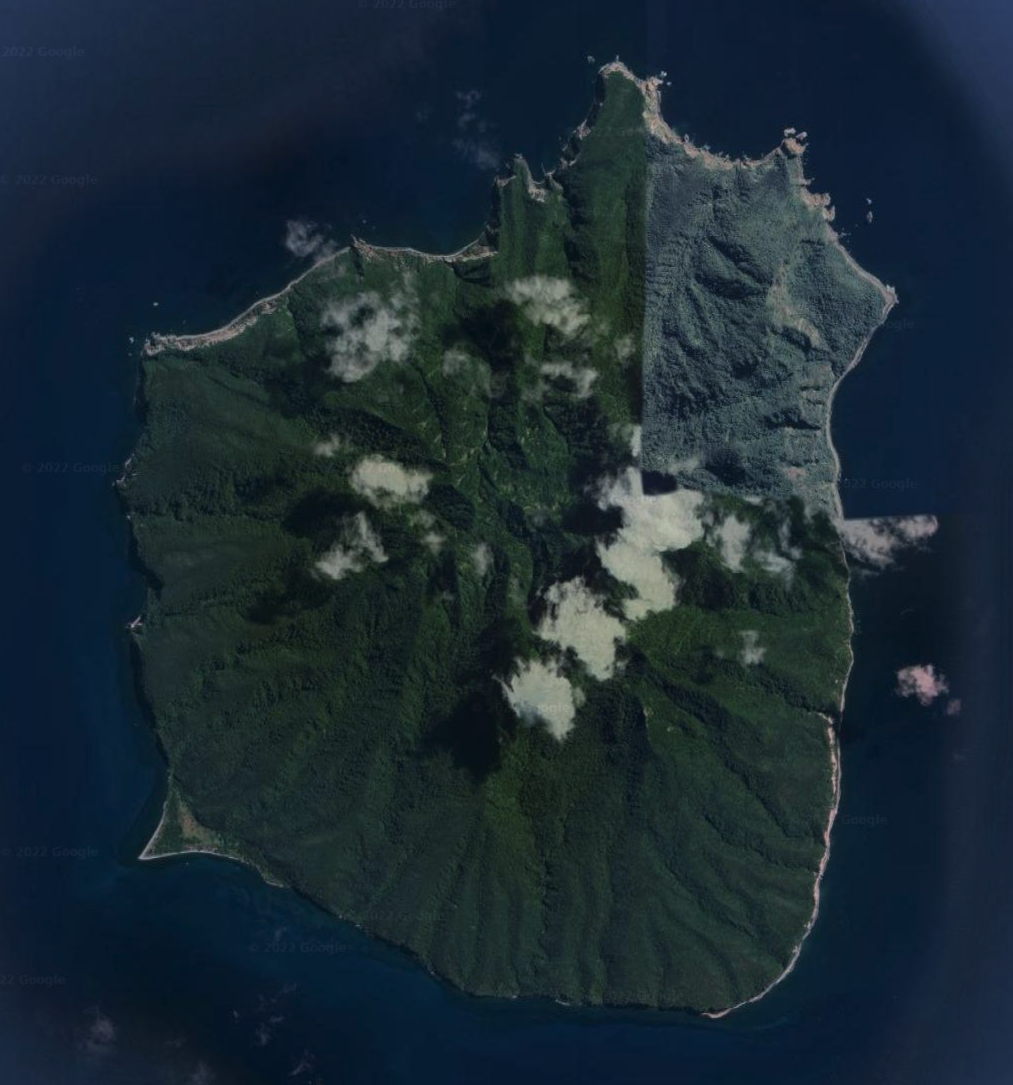

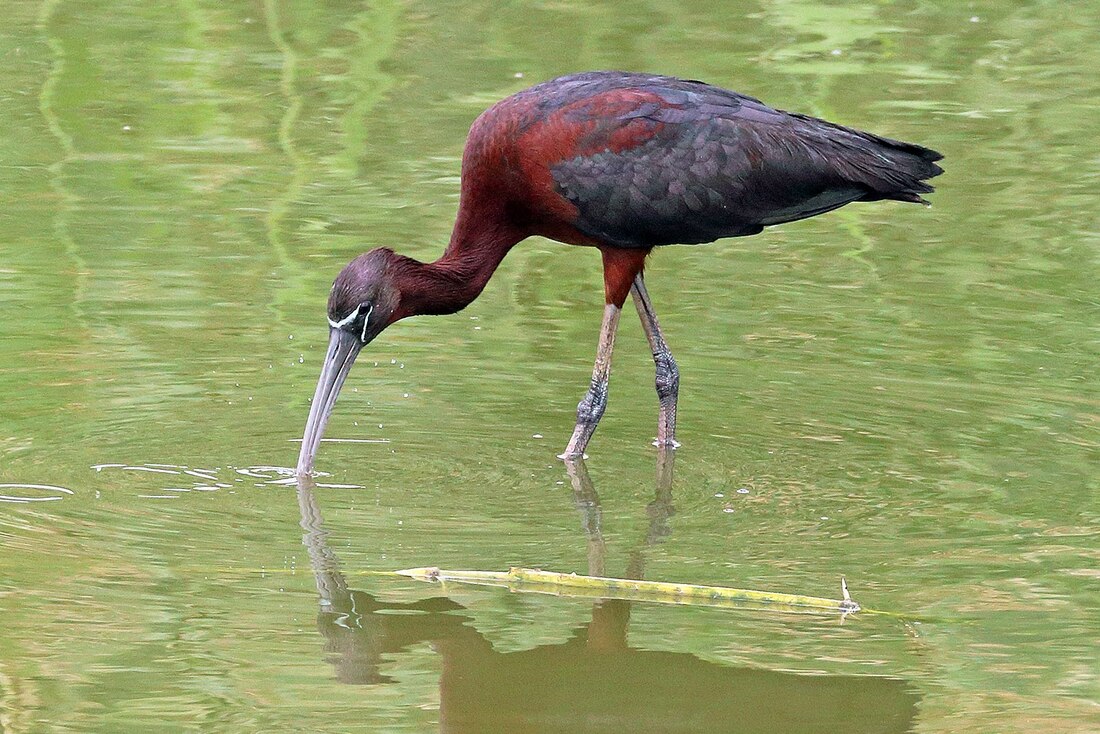
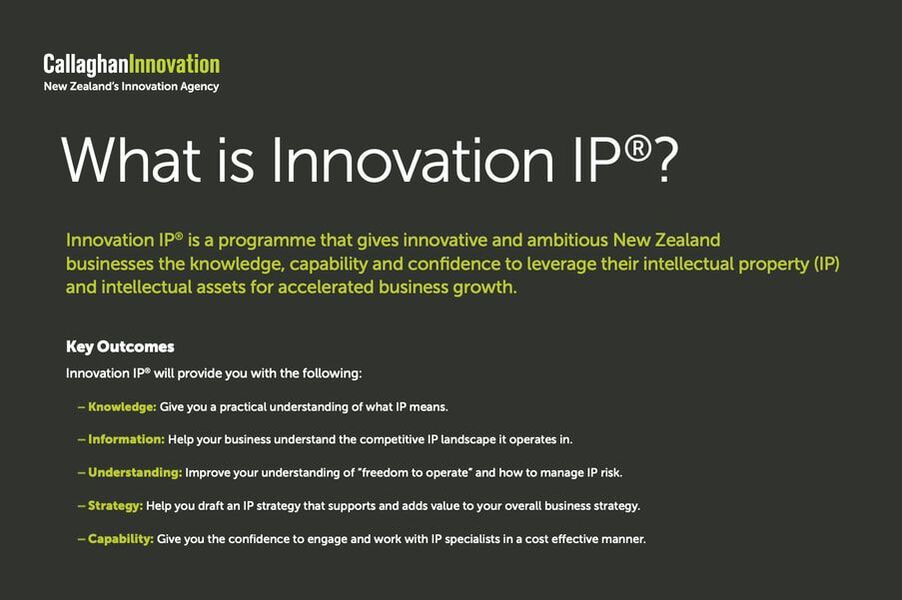
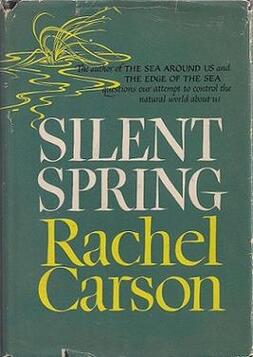

 RSS Feed
RSS Feed
